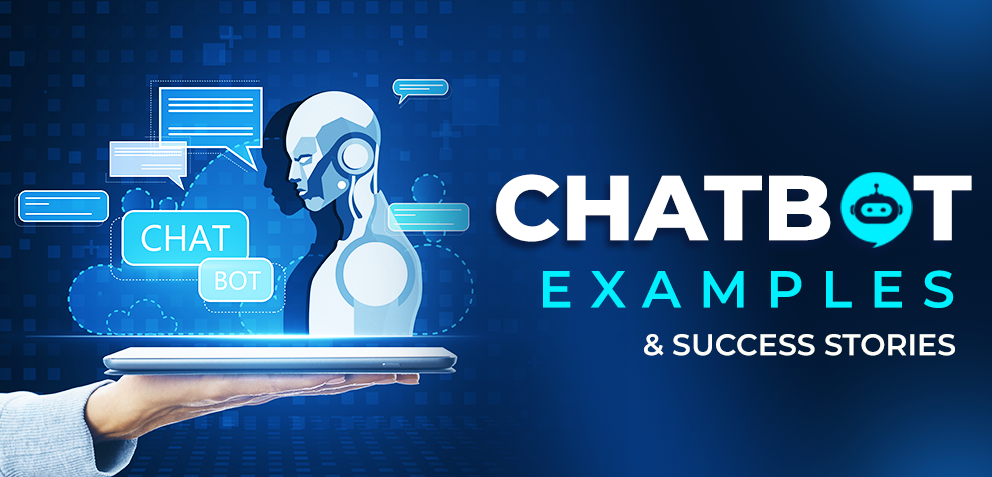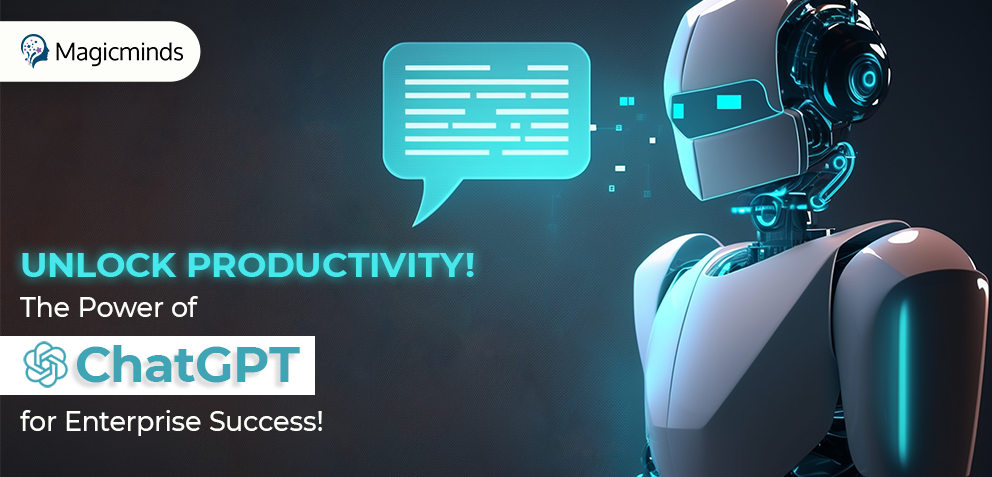Chatbot Development 101: A Guide to Evading Common Mistakes

Tags
 Stay In-the-loop
Stay In-the-loop
Get fresh tech & marketing insights delivered right to your inbox.
Share this Article
Category
- .Net Developer
- Adtech
- Android App Development
- API
- App Store
- Artificial Intelligence
- Blockchain Development
- Chatbot Development
- CMS Development
- Cybersecurity
- Data Security
- Dedicated Developers
- Digital Marketing
- Ecommerce Development
- Edtech
- Fintech
- Flutter app development
- Full Stack Development
- Healthcare Tech
- Hybrid App Development
- iOS App Development
- IT Project Management
- JavaScript development
- Laravel Development
- Magento Development
- MEAN Stack Developer
- MERN Stack Developer
- Mobile App
- Mobile App Development
- Nodejs Development
- Progressive Web Application
- python development
- QA and testing
- Quality Engineering
- React Native
- SaaS
- SEO
- Shopify Development
- Software Development
- Software Outsourcing
- Staff Augmentation
- UI/UX Development
- Web analytics tools
- Wordpress Development
“Your saved crop top is back in stock, order before it goes out of stock again!”
Such notifications make us feel so great, right? That moment of joy is the magic of a personalized chatbot – your virtual assistant in the digital world. As user convenience takes center stage, brands are diving into the world of chatbot development. The market is set to soar beyond $994 million by 2024, showcasing a remarkable 27% compound annual growth rate.
But, hold on! Before you embark on your chatbot development journey, be wary of common pitfalls that could turn your digital genius into a virtual disaster. Our blog is your guide, shedding light on these pitfalls and offering expert tips to ensure your chatbot doesn’t just talk but truly engages. So, buckle up, navigate the glitches, infuse a dash of user empathy, and witness your chatbot steal the conversational limelight!
Building Brilliant Bots: Pitfalls to Dodge in Chatbot Development
Mistake #1: Lack of Clear Objectives
Mistake #2: Insufficient User Research
Mistake #3: Inadequate Natural Language Processing (NLP)
Mistake #4: Limited Integration
Mistake #5: Ineffective Error Handling
Mistake #6: Neglecting Regular Updates
Mistake #7: Ignoring Data Privacy and Security
Mistake #8: Inadequate Testing
Mistake #9: Failure to Set User Expectations
Mistake #10: Lack of Scalability
Mistake #11: Ignoring Cultural Sensitivity
Building Brilliant Bots: Pitfalls to Dodge in Chatbot Development
Mistake #1: Lack of Clear Objectives
Common mistakes in chatbot development often stem from a lack of clear objectives. Failing to define the bot’s purpose and goals can result in vague responses and user dissatisfaction. Clear objectives provide a roadmap for effective development, ensuring the chatbot meets user expectations and delivers valuable interactions.
Without a focused direction, chatbot developers may overlook essential user needs and struggle to create a coherent conversational flow.
How to Resolve the Issue
- Define clear goals→ Clearly outline the purpose and objectives of your chatbot, specifying what it should achieve and for whom.
- User-centric design→ Prioritize user experience by understanding your target audience and tailoring the chatbot’s interactions to meet their needs.
- Iterative testing→ Regularly test your chatbot with real users to identify and address any ambiguities or misunderstandings in its responses.
Mistake #2: Insufficient User Research
Common mistakes in chatbot development often stem from insufficient user research. Failing to understand user needs and preferences can result in a chatbot that does not effectively engage users. Without proper research, developers may overlook critical user scenarios, leading to a mismatch between user expectations and the bot’s capabilities.
Additionally, neglecting ongoing user feedback can hinder iterative improvements, hindering the chatbot’s overall success. Comprehensive user research is crucial for building a successful and user-centric chatbot that enhances user experience.
How to Resolve the Issue
- Talk to your potential users! Conduct surveys, interviews, and usability tests to understand their needs. Don’t assume you know what they want.
- Regularly gather feedback and iterate your chatbot based on real user experiences.
- Stay curious, stay engaged, and always be willing to adapt – that is the key to avoiding insufficient user research in chatbot development.
- While choosing a chatbot development company, be cautious as well in your journey, as selecting a company without enough user research can lead to unexpected challenges.
RELATED READ: Championing Chatbot Development: 10 Inspiring Examples
Mistake #3: Inadequate Natural Language Processing (NLP)
Building chatbots with subpar NLP can lead to frustrating user experiences. Inadequate understanding of language nuances may result in inaccurate responses. Users might feel like they are talking to a robot rather than having a smooth conversation.
Enhancing Natural Language Processing capabilities ensures more natural and effective interactions, making the chatbot a more user-friendly and reliable tool.
How to Resolve the Issue
- Boost your chatbot’s NLP by refining training data, ensuring diverse language coverage.
- Incorporate user feedback loops for continuous improvement.
- Leverage pre-trained language models and stay updated on NLP advancements.
- Regularly fine-tune your bot’s understanding to enhance its conversational abilities.
Mistake #4: Limited Integration
This includes insufficient testing across platforms, neglecting user experience, and overlooking security measures. Inadequate dialogue flow design and failure to adapt to evolving user needs can hinder seamless integration.
Regular updates and robust testing procedures are crucial to minimize these issues and enhance the overall performance of the chatbot.
How to Resolve the Issue
- To address limited integration in chatbot development, consider using versatile platforms like Dialogflow or Microsoft Bot Framework. These tools offer diverse connectors for seamless integration with popular services, APIs, and messaging platforms.
- Additionally, explore custom coding solutions to bridge gaps and enhance your chatbot’s connectivity, ensuring it effectively interacts with various systems and data sources.
Mistake #5: Ineffective Error Handling
Ever wondered why the chatbot is giving errors? In chatbot development, common ineffective error handling mistakes include vague error messages that confuse users, failure to anticipate diverse user inputs and lack of context-aware responses.
Ignoring potential misunderstandings or providing generic error messages can hinder user experience, making it crucial to implement robust error-handling strategies for a seamless interaction.
How to Resolve the Issue
- To improve error handling in chatbot development, implement clear error messages, offer suggestions for user input, utilize natural language understanding to grasp user intent accurately, and employ fallback mechanisms for unrecognized queries.
- Regularly update the chatbot’s knowledge base to enhance its ability to handle diverse user inputs effectively.
Mistake #6: Neglecting Regular Updates
Neglecting regular updates in chatbot development can lead to mistakes such as outdated information, poor user engagement, and security vulnerabilities.
Staying current with advancements ensures the bot’s knowledge is accurate, improves its performance, and guards against potential issues.
How to Resolve the Issue
- Schedule routine reviews to incorporate new data, improve responses, and address evolving user needs.
- Regular maintenance ensures your chatbot stays effective and aligned with current trends.
Mistake #7: Ignoring Data Privacy and Security
Neglecting data privacy and security in chatbot development can lead to severe consequences, including unauthorized access to sensitive information, breaches, and legal issues.
It is crucial to implement robust encryption, secure storage practices, and regular audits to ensure user data remains co confidential and protected from potential threats.
How to Resolve the Issue
- It is essential to prioritize data privacy and security in chatbot development to ensure ethical and legal standards are met. Ignoring these aspects can lead to severe consequences, including legal actions and loss of user data.
- Watch out for shady chatbot development services – they might be snooping more than chatting!
RELATED READ: 2023 Mobile App Development Security: Essential Guidelines
Mistake #8: Inadequate Testing
Insufficient user scenario testing may overlook critical interactions. Ignoring diverse language inputs or neglecting real-world context can lead to inaccurate responses.
Additionally, limited stress testing may result in the chatbot’s failure under high loads, impacting user experience. Comprehensive training is crucial for robust chatbot development.
How to Resolve the Issue
- To address inadequate testing in chatbot development, implement diverse user simulations, incorporate edge cases, conduct usability testing, and employ continuous monitoring for real-world user interactions.
- Training data should be updated regularly, and leverage automated testing tools to enhance robustness and accuracy.
RELATED READ: Crowd-Sourced Testing 101: A Game-Changer for QA
Mistake #9: Failure to Set User Expectations
Creating a chatbot without clearly setting user expectations can lead to frustration. Users might expect more than the bot can deliver, causing disappointment. Remember, overpromising in AI development to build chatbots often leads to user frustration and dashed expectations.
Clearly communicate the bot’s capabilities and limitations upfront to manage user expectations and enhance the overall user experience. Keep it real so users know what to anticipate from the chatbot interaction.
How to Resolve the Issue
- Ensure your chatbot clearly explains its capabilities upfront.
- Use friendly language to manage user expectations, highlighting what it can and can’t do.
- Update and refine responses based on user feedback to improve accuracy.
- Openly communicate any limitations to avoid frustrating users.
Mistake #10: Lack of Scalability
What are the challenges in developing chatbots? Well, scaling up chatbots can be tricky- it is like trying to teach a pet to juggle. As conversations grow, so do the challenges: more users, more data, more complexity.
It is a bit like upgrading from a cozy chat to managing a bustling party – not always a seamless transition!
How to Resolve the Issue
- Consider optimizing code efficiency, employing cloud-based services for resource flexibility, and implementing a robust conversation flow.
- Try to enhance your bot’s knowledge and performance, ensuring it can handle a growing user base seamlessly.
Mistake #11: Ignoring Cultural Sensitivity
Cultural sensitivity is crucial in chatbot development. Ignoring it can lead to misunderstandings or even offense.
It is like throwing a party without considering dietary restrictions- someone’s bound to be unhappy, and it is just not cool. Always aim for inclusivity and understanding!
How to Resolve the Issue
- Use diverse datasets, test with users from various backgrounds, and steer clear of stereotypes.
- To stay on top of cultural nuances, update content based on user feedback.
- Keep it inclusive, and always be open to learning and adapting!
Final Words
Avoid common chatbot pitfalls by steering clear of overly complex language, ensuring clear instructions, and refining user prompts. Don’t underestimate the importance of regular testing to catch glitches. Strive for a balance between friendliness and professionalism in your bot’s tone. Keep refining based on user feedback, and don’t forget to integrate machine learning for continuous improvement. Stay user-centric, stay adaptable, and you will navigate the chatbot development like a pro!



